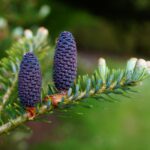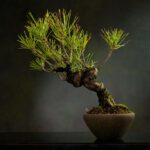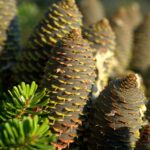What Month Do Oak Trees Lose Their Leaves
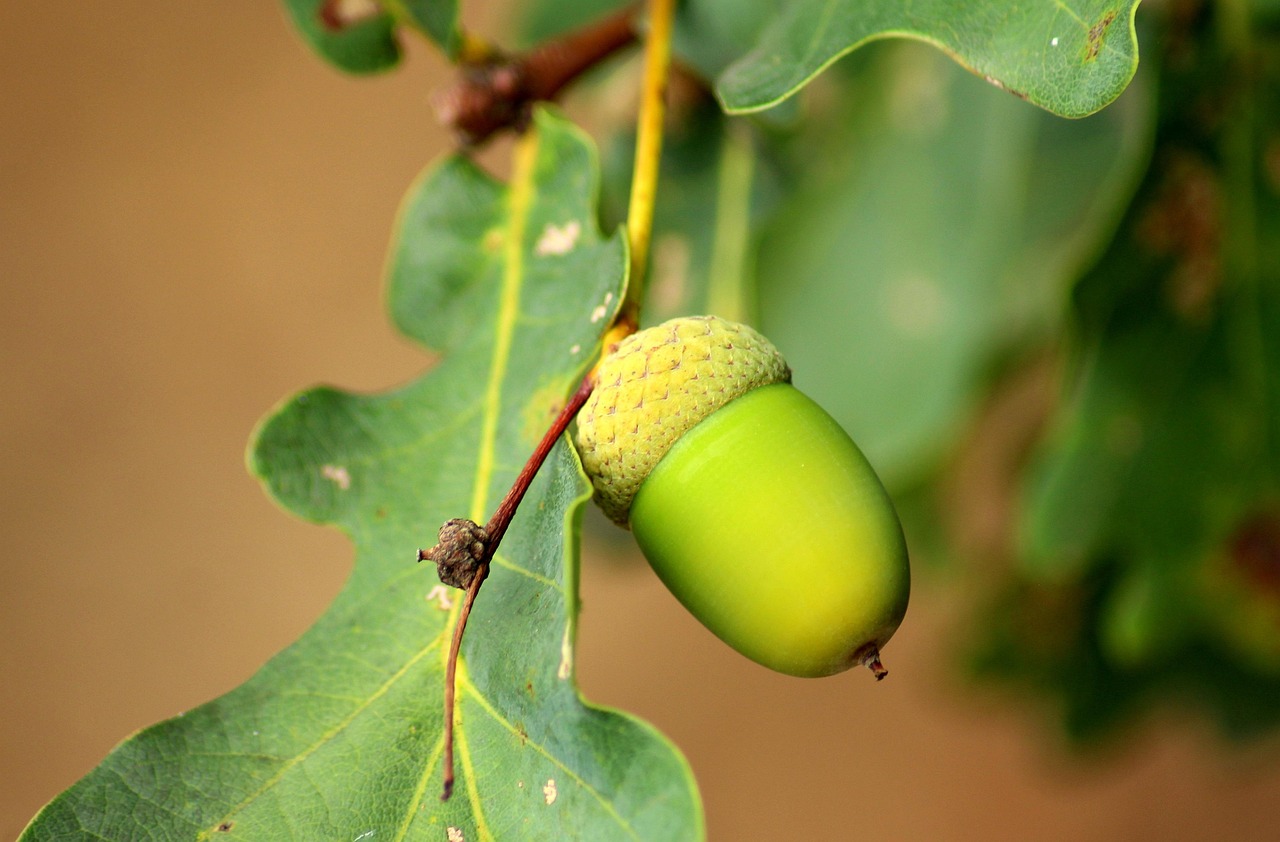
Have you ever wondered when oak trees shed their leaves? It’s a common question, and the answer isn’t always as straightforward as you might think. While many trees lose their leaves in the fall, some oak species have a different schedule. Understanding the factors that influence leaf drop can help you appreciate the natural cycles of these magnificent trees. Let’s explore when oak trees lose their leaves and why.
Key Takeaways
- Most oak trees, being deciduous, typically shed their leaves in the fall, usually from October to November, depending on the region and climate.
- Some oak species, like live oaks, exhibit marcescence, meaning they hold onto their dried leaves through winter until new growth pushes them off in spring.
- Environmental factors such as temperature, daylight hours, and even stress (like drought or disease) play a significant role in triggering leaf drop in oaks.
- The timing of leaf drop can vary geographically; oaks in colder climates tend to lose leaves earlier than those in warmer, southern regions.
- Observing your oak tree’s leaf drop schedule can offer clues about its health and help you plan appropriate care throughout the year.
What Month Do Oak Trees Lose Their Leaves?
It’s a common question: What month do oak trees lose their leaves? The answer, however, isn’t as straightforward as you might think. Most trees shed their leaves in autumn, preparing for winter dormancy. But oak trees? They can be a bit different. Some species hold onto their leaves much longer than others, and some even drop them in the spring. Understanding the timing involves looking at the type of oak, the local climate, and even the tree’s overall health. It’s not a one-size-fits-all answer, so let’s explore the factors that influence when oak trees decide to let go.
The timing of leaf drop in oak trees is influenced by a combination of factors, including species, climate, and the tree’s health. Some oaks are deciduous, shedding leaves in the fall, while others, like live oaks, may drop leaves in the spring. Environmental stressors can also affect leaf drop timing.
So, if you’re wondering when oak trees lose their leaves, keep reading to get a better idea of what to expect from your oak tree.
Deciduous vs. Evergreen Oaks
Not all oak trees are created equal when it comes to leaf drop. You’ve probably noticed some trees hold onto their leaves much longer than others. This difference boils down to whether an oak is deciduous or evergreen. It’s a pretty big deal, impacting everything from the tree’s appearance to its overall health.
Deciduous oaks shed all their leaves annually, usually in the fall. Think of classic oaks like the white oak or red oak. They put on a spectacular color show before dropping their leaves for the winter. Evergreen oaks, on the other hand, retain their leaves for most of the year, dropping them gradually or all at once in the spring. Live oaks are a prime example, often confusing when they drop their leaves as everything else is budding.
It’s interesting to note that the line isn’t always so clear. Some oaks are considered “tardily deciduous,” meaning they act like evergreens for most of the year but still shed all their leaves annually, just at a different time. It’s like they’re on their schedule. These trees, like some live oaks in North Texas, might drop their old, green leaves in the spring as new growth emerges. This can be a bit of a shock if you’re used to fall leaf drop!
The distinction between deciduous and evergreen is an adaptation to different environmental conditions. Deciduous trees are often found in areas with cold winters, where shedding leaves helps prevent water loss and frost damage. Evergreen trees are more common in warmer climates where they can continue photosynthesizing year-round.
Here’s a quick breakdown:
- Deciduous Oaks: Lose all leaves in the fall. Examples: White oak, Red oak, Pin oak.
- Evergreen Oaks: Retain leaves for most of the year, dropping them gradually or in the spring. Examples: Live oak.
- Tardily Deciduous Oaks: Shed all leaves annually in the spring. Examples: Some Live oaks.
Understanding whether your oak is deciduous or evergreen is the first step in understanding its leaf drop patterns. It also helps you anticipate when to expect leaf litter and plan your stump grinding services accordingly.
Typical Fall Leaf Drop
Okay, so when do most oak trees drop their leaves in the fall? It’s not an exact science, and Mother Nature likes to keep us guessing, but there are some general trends we can observe.
Generally, you’ll see the peak of leaf drop happening sometime in October and November. Of course, this varies depending on the specific type of oak and where you live. Some oaks are early birds, while others like to hold onto their leaves as long as possible.
Think of it like this: the days get shorter, the temperatures drop, and the trees get the signal that it’s time to conserve energy for the winter. They start shutting down the chlorophyll production, which is why the leaves change color, and then they form an abscission layer at the base of the leaf stem. This layer weakens the connection, and eventually, poof, the leaf falls off. It’s all part of the natural cycle. If you are in the Northeast, you can expect leaf fall dates to be in early or late October.
It’s worth noting that weather plays a huge role. A sudden cold snap can trigger leaf drop earlier than usual, while a mild autumn might delay it. Keep an eye on the forecast and your trees to get a sense of what’s happening in your area.
Here’s a simplified breakdown:
- Early October: Some species start dropping leaves.
- Mid-October: Peak leaf drop for many oaks.
- Late October/November: Later-dropping species finish up.
It’s not an exact schedule, but it gives you a general idea of what to expect. And remember, even within the same species, individual trees can vary in their timing. It’s all part of what makes nature so interesting.
Daylight and Temperature Triggers for Oak Leaf Abscission
Oak trees don’t just drop their leaves randomly. It’s a carefully orchestrated process influenced by environmental cues, primarily the amount of daylight and the temperature. As days shorten and temperatures cool, oaks receive signals that it’s time to prepare for winter. This preparation involves shedding their leaves to conserve energy.
The process is more complex than simply ‘cold equals leaf drop,’ though.
Here’s a breakdown of the key factors:
- Decreasing Daylight: As the days get shorter, the amount of sunlight available for photosynthesis decreases. This reduction in sunlight triggers hormonal changes within the tree.
- Falling Temperatures: Cooler temperatures also play a role. They slow down the rate of photosynthesis and other metabolic processes, making it less efficient for the tree to maintain its leaves.
- Abscisic Acid Production: The combination of shorter days and cooler temperatures leads to the production of abscisic acid, a plant hormone. This hormone initiates the formation of an abscission layer at the base of the leaf stalk (petiole). This abscission layer weakens the connection between the leaf and the branch.
The abscission layer is a specialized zone of cells that develops at the base of the leaf petiole. As this layer forms, it effectively cuts off the flow of water and nutrients to the leaf. This causes the leaf to gradually dry out and eventually detach from the tree.
Think of it like this: the tree is carefully weighing the costs and benefits of keeping its leaves. When the costs (energy expenditure to maintain the leaves) outweigh the benefits (photosynthesis), the tree initiates leaf drop. It’s a survival strategy to ensure the tree can make it through the winter and thrive again in the spring. It’s pretty cool when you think about it. I remember one year, we had an early freeze, and the leaves just went brown and dropped super fast. It was like the trees were in a hurry to get ready for winter.
Marcescence in Oaks
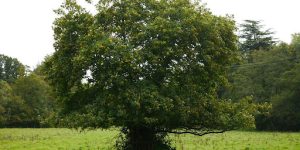
Marcescence is a fancy word for when oak trees hold onto their dead leaves through the winter. It’s pretty common, especially in younger trees, and it can make them look a little scraggly during the colder months. Instead of forming an abscission layer to drop the leaves like most deciduous trees, some oaks just… don’t. The dead leaves stay put until they’re eventually pushed off by new growth in the spring.
Why does this happen? Well, there are a few theories. Some think it’s related to the tree’s evolutionary history, suggesting that oaks might be slowly transitioning from evergreen to deciduous habits. Others believe it could be a defense mechanism, where the dead leaves protect the buds from hungry deer or harsh weather. It’s also possible that sunlight exposure plays a role; leaves higher in the canopy that get more sun might be more likely to exhibit marcescence.
It’s worth noting that marcescence can sometimes be a problem. Limbs covered in dead leaves can accumulate more snow, increasing the risk of breakage. So, while it might look interesting, it’s not always beneficial for the tree.
It’s also interesting to note that sessile oak and other species exhibit this behavior. Here are some potential reasons for marcescence:
- Protection of buds from browsing animals.
- Insulation against cold temperatures.
- A sign of delayed evolutionary adaptation to deciduous habits.
- Increased photosynthetic potential over the leaf’s lifetime.
Ultimately, the exact reasons behind marcescence are still not fully understood, and it’s an area of ongoing research. It’s just one of those quirky things that makes oak trees so fascinating.
Live Oaks and Spring Leaf Drop
It might seem odd to see an oak tree shedding leaves in the spring, but for some species, it’s perfectly normal. Live oaks, in particular, are known for this behavior. They aren’t true evergreens, even though they often appear that way. Instead of a dramatic fall color change and leaf drop, they gradually replace their leaves in the spring. Think of it as a slow-motion changing of the guard.
This spring leaf drop usually happens over a few weeks. Some trees might start growing new leaves as the old ones fall, while others wait until all the old foliage is gone before putting out fresh growth. It’s all part of the live oak’s natural cycle. Other trees that may drop leaves in spring include holly and Southern magnolia.
It’s important to note that while spring leaf drop is normal for live oaks, sudden or excessive leaf loss can indicate a problem. If you’re concerned about your tree, it’s always best to consult with a certified arborist.
Here’s a quick rundown of what to expect:
- Old leaves turn yellow or brown.
- Leaves drop gradually over several weeks.
- New, bright green leaves emerge.
- The tree remains healthy and vigorous.
In North Texas,live oaks and water oaks are good examples of trees that shed green leaves in the spring. Arboriculturally, this is called being “tardily deciduous.” Although they may appear to be evergreens, these trees are technically deciduous because they shed all of their leaves annually, although in the spring rather than the fall.
Which Oak Species Hold Leaves Through Winter?
It’s a common sight to see some oak trees stubbornly holding onto their leaves long after other trees have become bare. This phenomenon, called marcescence, is more common in certain oak species than others. So, which oaks are the usual suspects when it comes to keeping their foliage through the winter months?
Some oak species are just more prone to marcescence. This is often seen in younger trees, but it can also be a characteristic of certain species regardless of age. Here’s a closer look:
- Northern Red Oak (Quercus rubra): Often retains many of its brown leaves, especially when young.
- Pin Oak (Quercus palustris): Known for holding onto its leaves well into winter, creating a distinctive look.
- White Oak (Quercus alba): While generally dropping leaves, younger white oaks can exhibit marcescence.
- Scarlet Oak (Quercus coccinea): Similar to red oak, it can hold onto leaves, particularly in its lower branches.
It’s interesting to note that the tendency to retain leaves can vary even within the same species, depending on factors like the tree’s age, its location, and the specific weather conditions it experiences. You might notice that an oak in a sheltered spot holds onto its leaves longer than one exposed to harsh winds.
Marcescence might seem like a quirky trait, but it could offer some advantages to the tree. Some theories suggest that the dead leaves protect developing buds from browsing deer or help to trap snow, providing insulation for the roots. It’s a fascinating area of ongoing research.
While some oaks hold onto their leaves, others, like live oaks, shed their old leaves in the spring as new growth emerges. This can sometimes be confused with a tree being unhealthy, but it’s a natural part of its cycle. These trees are technically deciduous, even though they might appear evergreen at first glance. Understanding the difference can help you properly care for your trees and avoid unnecessary worry. If you’re in North Texas, you’ll see live oaks and water oaks doing this. It’s called being “tardily deciduous.”
Variations by Region
The timing of leaf drop in oak trees isn’t uniform across the country. It’s heavily influenced by regional climate variations. What might be typical in Georgia could be completely different in Maine. Let’s explore how location impacts when oaks decide to shed their leaves.
Generally, oaks in warmer climates tend to hold onto their leaves longer than those in colder regions. This is because the growing season is extended, and the trees can continue to photosynthesize for a longer period. Conversely, oaks in colder areas need to prepare for harsh winters earlier, leading to an earlier leaf drop.
It’s important to remember that microclimates within a region can also play a role. For example, an oak tree planted in a sheltered urban environment might retain its leaves longer than one exposed to harsh winds and colder temperatures in a rural area.
Consider these points:
- Latitude: Trees at higher latitudes experience shorter days and colder temperatures, triggering earlier leaf drop.
- Elevation: Higher elevations generally have colder climates, leading to earlier leaf abscission.
- Proximity to water: Coastal regions often have milder temperatures, which can delay leaf drop compared to inland areas. This can affect water management solutions for the trees.
It’s fascinating to observe how these regional differences manifest in the timing of fall colors and leaf drop. What’s considered late October in one area might be mid-September somewhere else. Keep an eye on your local oaks to see how they adapt to your specific climate.
Environmental Stressors
Oak trees are pretty tough, but they’re not invincible. A lot of things in their environment can mess with their leaf drop schedule, or even their overall health. It’s not just about the temperature and daylight hours; sometimes, it’s about what the tree has to deal with daily.
Drought
Lack of water is a big one. If an oak doesn’t get enough water, it might drop its leaves early to conserve energy. It’s like the tree is saying, “Okay, things are tough, I need to focus on survival, not on keeping these leaves alive.” You might notice leaves turning brown and crispy before they fall. It’s a sign the tree is stressed. Combatting drought stress is crucial for tree health.
Soil Compaction
If the soil around an oak’s roots is too compacted, it can’t get the water and nutrients it needs. Think of it like trying to breathe through a thick blanket. The roots suffocate, and the tree suffers. This can lead to premature leaf drop, stunted growth, and a whole host of other problems. Construction, heavy foot traffic, or even just driving over the root zone can cause compaction.
Pollution
Air and soil pollution can also affect oak trees. Pollutants can damage leaves directly, making them drop sooner than they should. They can also mess with the soil chemistry, making it harder for the tree to absorb nutrients. Urban trees, in particular, face a lot of urban tree stress from pollution.
Pests and Diseases
Insects and diseases can wreak havoc on oak trees. Some pests feed on the leaves, causing them to drop prematurely. Others attack the roots or trunk, weakening the tree and making it more susceptible to other stressors. Diseases can also cause leaf drop, sometimes very suddenly. Keep an eye out for signs of infestation or disease, like unusual spots, holes, or discoloration on the leaves.
Physical Damage
Storms, construction, or even just careless landscaping can damage oak trees. Broken branches, injured bark, and damaged roots can all stress the tree and affect its leaf drop schedule. Even seemingly minor injuries can open the door to pests and diseases.
Environmental stressors can have a cumulative effect. A tree that’s already stressed by drought might be more vulnerable to pests or diseases. It’s important to address these stressors as soon as possible to keep your oak trees healthy and happy.
Here’s a quick rundown of common stressors and their effects:
- Drought: Early leaf drop, browning leaves
- Soil Compaction: Stunted growth, yellowing leaves
- Pollution: Damaged leaves, nutrient deficiencies
- Pests/Diseases: Leaf spots, defoliation
- Physical Damage: Broken branches, bark damage
Signs of Health vs. Stress
Knowing what to look for can help you determine if your oak tree is thriving or struggling. Healthy oaks generally exhibit vibrant foliage, robust growth, and a predictable leaf drop schedule. Stressed oaks, on the other hand, may show signs of distress through their leaves, branches, and overall form.
Observing your oak tree regularly will allow you to catch potential problems early, increasing the chances of successful intervention.
Here are some key indicators to watch for:
- Leaf Color and Density: Healthy oak leaves should be a rich green during the growing season. Yellowing, browning, or premature leaf drop can signal issues. A thinning canopy, where you can see significantly more sky through the branches than usual, is another cause for concern.
- Branch Dieback: Keep an eye out for dead or dying branches. This can manifest as branches that fail to produce leaves in the spring or branches with brittle, easily broken twigs. Significant dieback can indicate a serious underlying problem.
- Growth Rate: A healthy oak should exhibit consistent growth each year. While growth rates vary by species and age, a sudden decrease in growth can be a sign of stress. You can often assess growth by observing the length of new twig growth each year.
If you notice any of these signs, it’s important to investigate further to determine the cause and take appropriate action. It might be a good idea to check for signs of distress in your tree.
How to Monitor Your Oak’s Leaf Drop Schedule Year-to-Year
Keeping tabs on when your oak tree sheds its leaves can tell you a lot about its health and how it’s responding to the environment. It’s a simple way to spot potential problems early on. By observing and recording the timing and amount of leaf drop each year, you can establish a baseline for what’s normal for your specific tree and location. This information becomes invaluable for detecting deviations that might indicate stress or disease.
Creating a Leaf Drop Log
Start a simple log to track the leaf drop. Here’s what to include:
- Date of First Leaf Drop: Note when you first notice leaves starting to fall.
- Peak Leaf Drop: Record the period when the most leaves are falling.
- Date of Last Leaf Drop: Mark the day when the tree is mostly bare.
- Weather Conditions: Note the temperature, rainfall, and any unusual weather events during the leaf drop period. For example, a sudden freeze can cause premature leaf drop.
- Overall Leaf Color and Condition: Before the leaves fall, observe their color. Are they a healthy brown, or are there unusual spots or discoloration? Note any signs of insect damage.
Comparing Year-to-Year Data
Once you have a few years of data, you can start comparing the leaf drop schedules. Look for trends and anomalies. For instance, if your oak tree consistently drops its leaves in late October, but one year it starts in early September, that could be a sign that something is wrong. Similarly, if the leaves are consistently vibrant green before turning brown, but one year they are yellow or spotted, that could indicate a nutrient deficiency or disease. Comparing year-to-year data helps you establish a baseline and identify potential issues early.
Recognizing Signs of Trouble
While some variation in leaf drop is normal, certain signs should raise concern:
- Premature Leaf Drop: Leaves falling significantly earlier than usual.
- Delayed Leaf Drop: Leaves are staying on the tree much longer than usual.
- Unusual Leaf Color: Leaves turning yellow, brown, or spotted before falling.
- Sparse Canopy: A thinning canopy, indicating that the tree is losing more leaves than it’s growing.
- Branch Dieback: Dead or dying branches, which can be a sign of stress or disease.
If you notice any of these signs, it’s a good idea to consult with a certified arborist. They can help you diagnose the problem and recommend appropriate treatment. Early detection and intervention can often save a tree from serious damage or death.
By carefully monitoring your oak tree’s leaf drop schedule, you can gain valuable insights into its health and well-being. This proactive approach allows you to address potential problems early on, helping to ensure that your oak tree thrives for many years to come.
Care Tips
Okay, so you’re invested in your oak tree. Good! Let’s talk about keeping it happy and healthy. It’s not rocket science, but a little attention goes a long way. Think of it as preventative medicine for your leafy friend.
Watering
Watering is key, especially for younger trees. Newly planted oaks need consistent watering to establish a strong root system. But don’t drown them! Overwatering can be just as bad as underwatering, leading to root rot and other problems. A good rule of thumb is to water deeply but infrequently. Let the soil dry out a bit between waterings. Mature oaks are more drought-tolerant, but they’ll still appreciate a good soak during extended dry spells.
Mulching
Mulch is your friend. Apply a layer of organic mulch around the base of the tree, but keep it away from the trunk itself to prevent rot. Mulch helps retain moisture in the soil, suppresses weeds, and moderates soil temperature. Plus, as it decomposes, it adds nutrients to the soil. Wood chips, shredded bark, or pine straw all work well.
Pruning
Pruning is important for maintaining the health and shape of your oak. Remove any dead, damaged, or diseased branches as soon as you spot them. This helps prevent the spread of disease and encourages healthy growth. Proper pruning also improves air circulation within the tree’s canopy, which can reduce the risk of fungal problems. If you’re not comfortable pruning yourself, consider hiring tree trimming professionals. They have the expertise and equipment to do the job safely and effectively.
Fertilizing
Oaks generally don’t need a lot of fertilizer, especially if they’re growing in healthy soil. However, if your tree is showing signs of nutrient deficiency, such as yellowing leaves or stunted growth, a soil test can help determine what nutrients are lacking. Based on the results, you can apply a balanced fertilizer in the spring. Be careful not to over-fertilize, as this can damage the tree. You can also sign up for free landscaping tips to learn more about tree care.
Pest and Disease Control
Keep an eye out for pests and diseases. Oak trees are susceptible to a variety of problems, including oak wilt, leaf spot, and insect infestations. Regularly inspect your tree for any signs of trouble, such as unusual leaf discoloration, branch dieback, or insect activity. If you suspect a problem, consult with a certified arborist or your local extension office for diagnosis and treatment recommendations. Early detection and treatment are crucial for preventing serious damage to your tree.
Taking care of your oak tree is an investment in the future. A healthy oak can provide shade, beauty, and ecological benefits for generations to come. By following these simple care tips, you can help ensure that your oak thrives for many years.
Planning Your Landscape
When incorporating oak trees into your landscape design, it’s important to consider their mature size, leaf drop habits, and potential impact on surrounding plants. Different oak species have varying characteristics, so selecting the right one for your specific needs and location is key. Think about the amount of sunlight your yard receives, the soil type, and the overall aesthetic you’re aiming for. A little planning goes a long way in ensuring your oak thrives and complements your outdoor space.
Oak Tree Placement
Choosing the right spot for your oak is super important. You need to think about how big it will get. Oaks can get really, really big, and you don’t want them too close to your house or power lines. Also, consider the roots. They can spread out a lot and might mess with your pipes or driveway. Make sure it has enough room to grow without causing problems later on. It’s also a good idea to think about where the shade will fall as the tree grows. You might want shade in the summer, but not so much in the winter.
Companion Plants
Some plants just don’t like growing near oak trees. It’s because of the shade, the root competition, or even the chemicals that oak leaves release as they break down. Do some research to find plants that will thrive under or near your oak. Things like ferns, hostas, and some types of wildflowers often do well. It’s all about creating a little ecosystem where everything can live together happily. You can also use organic mulch to help the soil and keep things healthy.
Long-Term Maintenance
Oaks are pretty tough, but they still need some love to stay healthy. Regular pruning can help keep them in good shape and prevent problems down the road. Keep an eye out for any signs of disease or pests, and take care of them quickly. Also, make sure the tree gets enough water, especially when it’s young or during dry spells. A healthy oak can live for a really long time, so it’s worth putting in the effort to take care of it. Proper care ensures your oak remains a beautiful and valuable part of your landscape for generations.
Planting an oak is like making a long-term investment. It’s not just about what looks good now, but what will benefit your property and the environment for years to come. Think about the future and how your oak will contribute to the overall health and beauty of your landscape.
Thinking about how your yard will look is a big first step. Imagine what you want to see and how you’ll use the space. Don’t just guess; make a plan! For more easy tips and tricks to get your dream yard started, head over to our website.
Frequently Asked Questions
When do most oak trees typically lose their leaves?
Most oak trees, particularly those known as deciduous oaks, typically shed their leaves in the autumn months, primarily from late October through November. This process is a natural part of their preparation for winter dormancy.
Why do some oak trees lose their leaves in the spring instead of the fall?
Some oak species, such as live oaks, are considered evergreen or semi-deciduous. Unlike their deciduous counterparts, these oaks retain their leaves throughout the winter and shed them in the spring, usually between January and March, as new foliage emerges.
What factors trigger oak trees to shed their leaves?
The timing of leaf drop in oaks is primarily influenced by environmental cues such as decreasing daylight hours and dropping temperatures. These signals prompt the tree to begin the process of abscission, where a layer of cells forms at the base of the leaf stem, causing the leaf to detach.
What is marcescence in oak trees?
Marcescence is a phenomenon observed in some oak species where dead, brown leaves remain attached to the branches throughout the winter. These leaves typically fall off in the spring when new growth begins.
How can I tell if my oak tree’s leaf drop is normal or a sign of stress?
While a natural leaf drop is a sign of a healthy tree, unusual or premature leaf loss can indicate stress. Factors such as drought, nutrient deficiencies, pests, or diseases can cause an oak tree to shed its leaves earlier than expected. It is advisable to consult an arborist if you observe concerning changes.
Does the timing of leaf drop vary by oak species or region?
The exact timing of leaf drop can vary based on the specific oak species, local climate conditions, and regional weather patterns. For instance, oaks in warmer climates may retain their leaves longer than those in colder regions.
What care tips are recommended for oak trees during their leaf-shedding period?
To support the health of your oak tree during leaf drop, ensure it receives adequate water, especially during dry periods. Avoiding compaction of the soil around the tree’s roots and providing appropriate nutrients can also contribute to its overall well-being.
How can one effectively monitor an oak tree’s leaf drop schedule over time?
Monitoring your oak tree’s leaf drop schedule involves observing the typical timing each year. Keeping a simple record can help you identify any significant deviations that might warrant further investigation by a tree care professional.

